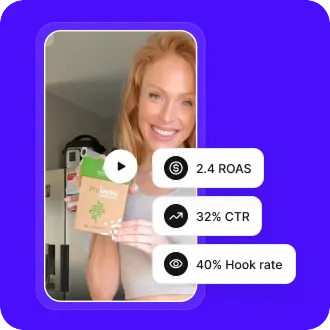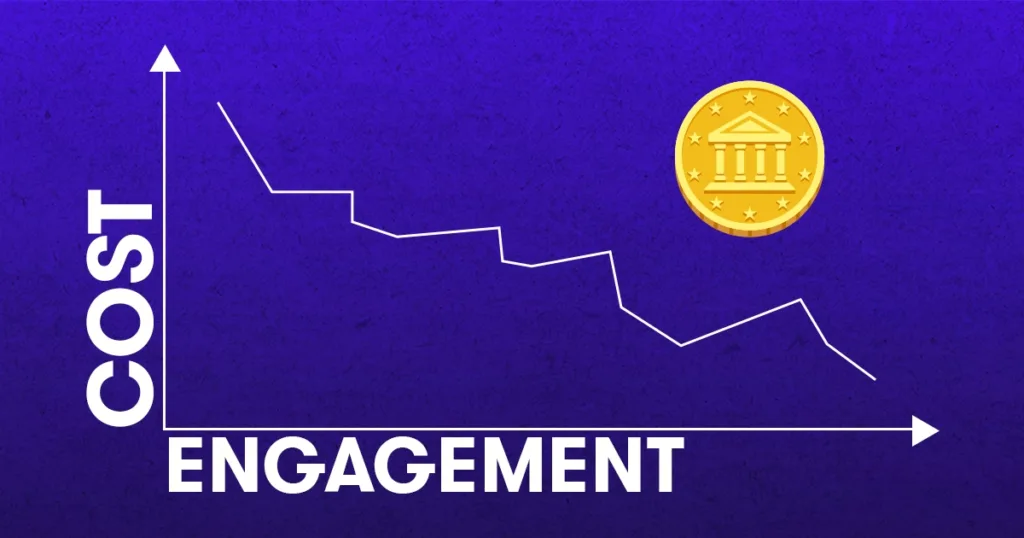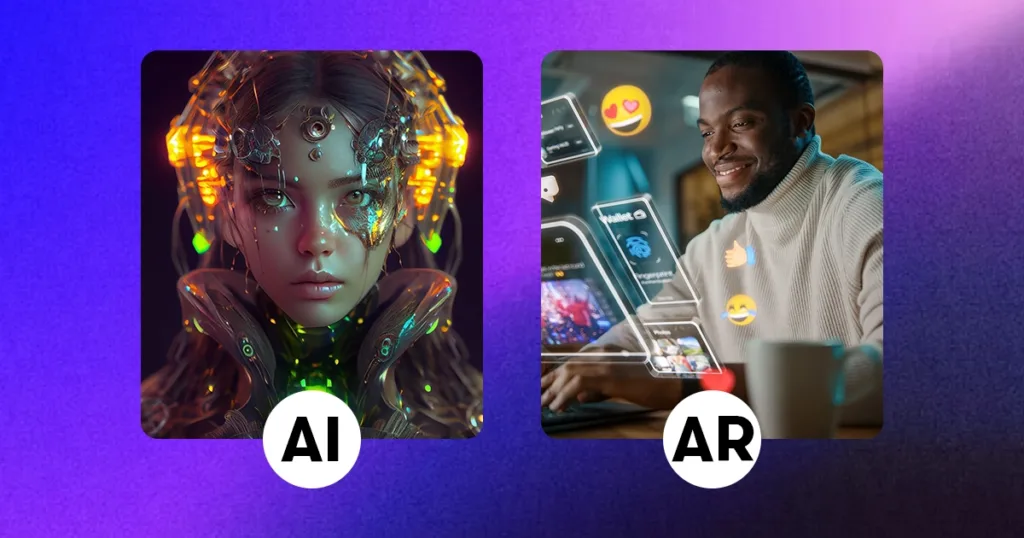From Glossier to Shopify: 26 Well-Known Brands That Work With Micro Influencers
Passionate content and search marketer aiming to bring great products front and center. When not hunched over my keyboard, you will find me in a city running a race, cycling or simply enjoying my life with a book in hand.

In the ever-evolving world of digital marketing, micro influencers are becoming a cornerstone for brands aiming to increase their reach and authenticity among niche audiences.
These influencers, typically having followers ranging from 1,000 to 100,000, offer a unique blend of personal touch and relatability, making them ideal partners for brands looking to make a significant impact.
This article delves into the dynamics of brands that work with micro influencers, highlighting at least 27 brands that have successfully partnered with these smaller-scale influencers.
We will explore the nature of these collaborations, from PR packages to sponsored posts, across various industries.
Looking to start collaborations? Explore Billo to connect with brand and influencers.
Big Brands That Work With Micro Influencers
1. Glossier
Industry: Beauty
Glossier is renowned for its approach to PR with small influencers. The company regularly sends out new product releases to a diverse group of micro influencers, encouraging authentic reviews and tutorials on social platforms like Instagram and YouTube.
2. Audible
Industry: Technology and Media
@cailinvans Is this the year I finally read (listen to) 1984?? @Audible knew what they were doing with this production #booktok #1984georgeorwell #audible #audiobooks #bookgirlies
♬ 1984 Andrew scott am I famous now – judas / alex 🌈♾️
As a prime example of micro influencer brands, Audible partners with book bloggers and podcasters. These influencers often share their monthly book choices and special promotions, offering insights tailored to their book-loving audiences.
3. Warby Parker
Industry: Eyewear
@lynnkate Help me choose a frame!? Or two! I tried @Warby Parker easy & free home try-on to see which frames fit me the best 🤍 #warbyparkerhometryon #warbyparkerpartner
♬ original sound – Lynn Kate
Warby Parker leverages small influencers by engaging them in campaigns that showcase their try-at-home glasses. Influencers share their experiences and styles, making eyewear shopping more accessible and personal.
4. Airbnb
Industry: Travel and Lodging
@kolatravels Found the sexiest airbnb in Madrid spain booked it for the vibes but it was so cozy we had a blast ❤️ Save for your next Madrid trip name at the end of the video 🔥 Follow for more @airbnb finds #creatorsearchinsights #madrid #spain #airbnbfinds #travelmadrid #madridtrip #madridthingstodo #traveltips #uniqueairbnb
♬ original sound – natalie’s vintage vinyl corner
Airbnb finds great value in micro-influencer collaborations, working with travel bloggers and vloggers who showcase their stays in unique locations around the world, thus inspiring their followers to explore new travel options.
5. Daniel Wellington
Industry: Watches
@itsemified Daniel Wellington Quadro Coral Rose Gold with mother of pearl #danielwellington #watches #fyp #foryoupage
♬ Promosi – Satria Petir
Famous for its expansive influencer program, Daniel Wellington is a leader among brands that collaborate with small influencers on Instagram. They gift watches to influencers for review and promotional codes for follower discounts.

Find the Right Creators for Your Brand
6. Herbivore Botanicals
Industry: Skincare
@bella.dane Favorite facial oil ✨ @Herbivore Botanicals
♬ original sound – Bella Dane
This natural skincare brand that prioritizes work with micro influencers by sending them PR kits of their new or best selling products, which influencers then review for their focused, wellness-interested followers.
7. ASOS
Industry: Fashion
@idylleed Let me know which dress I should keep and where you like to buy your outfits🫶🏻 @asos #asoshaul#dress#fyp
♬ Love Story – </3 • Folge ich
ASOS is active in engaging small personal brands to collab with, providing a range of influencers with their latest fashion lines to wear and promote on social media platforms.
8. Shopify
Industry: eCommerce
@officialhassanfarhat Create a high converting shopify dropshipping product page! #dropshipping #howtodropship #dropshippinghacks shopifydropshipping #dropshippingtips #dropshippingforbeginners
♬ Chill Vibes – Tollan Kim
Emphasizing brands looking for micro influencers, Shopify partners with small business owners and entrepreneurs who use their platform to share stories of business success and growth, including tips on launching e-commerce stores, selecting a business address for LLC registration, and building brand presence through influencer content, thus reaching a more targeted business-savvy audience.
9. Chewy
Industry: Pet Supplies
Chewy collaborates with pet owners who are influential within their communities. These pet influencers share personalized content about their favorite Chewy products, appealing directly to fellow pet enthusiasts.
10. HelloFresh
Industry: Meal Kit Subscription Service
@kandys.life.hey I took all my @HelloFreshbenl recipes and made a Hello Fresh Recipe Book for myself! All tried and “tasted” 🤪 #hellofresh #foodtok #selfmaderecipebook #recipebook #hellofreshrecipes #easyrecipes
♬ original sound – MORE ENERGY 😎
HelloFresh works with food bloggers and busy parents to demonstrate the convenience and quality of their meal kits, exemplifying an effective micro influencer brand.
11. Levi’s
Industry: Apparel
Levi’s has historically capitalized on PR with small influencers, especially during product launches and sustainability campaigns, reaching lifestyle and fashion influencers who resonate with their brand values.
12. Blue Apron
Industry: Food
@wimyummy These poke tacos are sooo good 🥰 #foodtiktok #foodie #foodietokph #foodtiktokph #foodietok #foodieph #poketaco @theblueapronph @viviendelvalle
♬ Toxic x Pony – ALTÉGO
Blue Apron is another meal kit service that values partnerships with food bloggers and dietitians, helping them to share fresh, recipe-driven content with their health-conscious followers.
13. Lush Cosmetics
Industry: Beauty
@oddityrhi lush’s products are really great for my skin (not so great for my wallet lol) #skincare #skincareroutine #lushcosmetics #lush #theordinary #facemask
♬ 8pm (From “Animal Crossing Wild World”) – Omili
Lush focuses on ethical beauty conversations, engaging influencers who can discuss their environmentally friendly and cruelty-free practices, making it a perfect match for brands looking for small influencers.
14. Peloton
Industry: Fitness
@cheersboo Peloton Hack to watch any fitness platform on your peloton @hallec13 #peloton #fitness #selfimprovement
♬ original sound – Taylor
Peloton uses micro influencers in the fitness space to share their workout routines and benefits of using Peloton equipment, reaching fitness enthusiasts who value community and technology integration in their workouts.
15. Thinx
Industry: Apparel
@julissasantosss Period panties are from @thinx I got mine at Target. #thinx #periodpanties #periodunderwear #thinxreview
♬ original sound – Julissa Santos
Thinx engages health and wellness influencers to talk about their experiences with Thinx products, thereby facilitating conversations around women’s health issues, a prime example of well-done micro influencer collaboration.
16. Pura Vida Bracelets
Industry: Jewelry
@hauls.by.avery4 Kinda a chaotic video but i fr 💗 puravida and use my 20% off code DYLANHETRICK20 plsss #fyp #foryoupage #fypage #fypシ゚viral #fyppppppppppppppppppppppp #FORYOUPAGE #FYP #preppytiktok #prhaul #puravida #puravidabracelets @puravida #puravidacrew #braceletmaking #puravidacollection #FYP #FORYOUPAGE #FYPPPPPP #preppy #grwm #preppyaesthetic #grwmmakeup #grwmhair #foryou
♬ original sound – 🙈 𝐓𝐇𝐄𝐈𝐀..! ⭐️💗
This jewelry brand is noted for its colorful, handcrafted products and works extensively with lifestyle influencers, it is a brand that lives and breathes collaboration with small influencers on Instagram and TikTok.
17. Tarte Cosmetics
Industry: Beauty
@beautyforeverybody What is your favourite Tarte product? #tarte #tartecosmetics #tarteshapetape #5bestproducts #fivebestproducts #fyp
♬ My Heart Will Go On (Titanic) – Maliheh Saeedi & Faraz Taali
Tarte is well-known for sending elaborate PR packages to beauty influencers, encouraging them to create vibrant makeup tutorials that highlight their eco-friendly cosmetics.
18. Allbirds
Industry: Footwear
@styledbykimkj we love how versatile our @Allbirds are! they are the perfect shoes to elevate any outfit and can be styled so many different ways. check out the link in my bio snd use code KIMJ15 for 15% off your first order #allbirdspartner #allbirds
♬ Coming Down – James Malco
Allbirds finds niche audiences through eco-conscious fashion influencers, highlighting the sustainable materials used in their footwear and tapping into the followings of stylish micro influencers.
19. Fabletics
Industry: Athletic Wear
@itsjusleo Do NOT sleep on these $12 shorts 😮💨🔥 #fabletics #fitness #gymtok #fableticsmen #transformation #feelsgood
♬ original sound – Leo
Fabletics employs a strategy involving fitness influencers of all sizes, promoting their monthly workout attire subscriptions.
20. Under Armour
Industry: Sports Apparel
@footkorner60 🔥 UNDER ARMOUR 🔥 Collection @Under Armour disponible la famé en magasin avec pleins d’autres ensembles 💪🏾💪🏾🔥🔥 #footkornerbeauvais #footkorner #fk #beauvais #beauvais60🇨🇵🇨🇵 #nouveauté #underarmour #under #newscollection
♬ son original – katr1 😘
Under Armour engages sports enthusiasts and regional athletes, sharing stories of performance and endurance, a solid strategy for brands looking for micro influencers.
21. Birchbox
Industry: Beauty Subscription
Birchbox uses a wide array of beauty influencers to unbox and review their monthly subscription boxes, aiming at beauty enthusiasts curious about new products.
22. KIND Snacks
Industry: Food
@saidaochoafit These are so Fire!! #frozenkindbars #kindbaricecream #kindbars #nightcap #fyp
♬ original sound – Saida Ochoa
KIND Snacks partners with health and wellness influencers to promote their healthy snack options, ideal for micro influencer focused on nutrition and diet tips.
23. Function of Beauty
Industry: Personalized Beauty Products
@hunterdestin hair goals have been met thanks to @functionofbeauty 💗 #FunctionofBeauty code: FUNCTIONOFHUNTER20 for 20% off #HairGoals #FunctionPartner
♬ Spring – Aesthetic Sounds
This innovative brand leverages beauty influencers to discuss their personalized hair care regimes, engaging closely with followers interested in custom beauty solutions.
24. Away
Industry: Luggage
@katelynfletcher THEY NEVER HAVE SALES!!!??? Freaking out @away luggage is 20% off right now – I want to catch a flight ASAP to use these new beauties #travelaway #awaypartner #traveltiktok #travelmusthaves
♬ original sound – Katelyn Fletcher Nassar
Away works with travel influencers to feature their stylish and functional luggage in various travel scenarios, helping them reach an audience that values aesthetics and durability in travel gear.
25. Native
Industry: Personal Care
@thatugcgirl Taking care of my skin never been easier. #ugc #ugccreator #ugccontentcreator #ugccommunity #beauty #native
♬ original sound – picmoplus
Native focuses on micro influencers in the wellness and sustainability spaces to discuss the benefits of their natural deodorants and body care products.
26. Sephora
Industry: Beauty Retail
@theglowjourney What I would buy with $50 at Sephora 😊 as always, just my opinions! #sephoratok #sephorahaul #sephora #shopping #makeupshopping
♬ Never Lose Me – Flo Milli
Sephora frequently collaborates with a diverse range of beauty influencers, from makeup beginners to professionals, showcasing everything from daily makeup routines to comprehensive reviews of new products.
The Value of Micro Influencer Collaborations
Micro influencers, typically defined as those who have between 1,000 and 100,000 followers, offer a unique blend of relatability and authority within their specific niches.
This allows them to maintain highly engaged audiences, making their endorsements more impactful than those of celebrities or macro-influencers, whose broader appeal might not resonate as deeply with specific demographic groups.
1. High Engagement Rates
One of the primary advantages of partnering with micro influencers is their ability to generate high engagement rates. Their content usually fosters a strong sense of community and active participation, which is reflected in higher likes, comments, and shares.
This engagement is crucial, as it indicates a higher level of interest and interaction, which can translate directly into increased brand visibility and even sales.
2. Authenticity and Trust
Followers of micro influencers often view them as more relatable and trustworthy compared to larger-scale celebrities or influencers. This perception stems from the more personal and less polished content that micro influencers typically post, which resonates with their audience’s everyday experiences.
For brands, this authenticity means that endorsements feel more like genuine recommendations rather than paid advertisements, thereby enhancing the credibility of the brand through association.
3. Targeted Influence
Another significant benefit of micro influencer collaborations is the ability to target specific audiences. Micro influencers often cater to niche markets or specific geographical locations, allowing brands to tailor their campaigns to reach the most relevant audience.
This targeted approach can be highly effective in driving awareness and engagement within specific communities or demographic groups, ensuring that marketing efforts are not wasted on uninterested parties.
4. Cost-Effectiveness
Working with micro influencers is also generally more cost-effective compared to engaging with high-profile celebrities.
Smaller influencers are more likely to work in exchange for products or less expensive fees, providing a better return on investment, especially for brands with limited marketing budgets but a desire to expand their reach.

5. Increased Conversion Rates
The culmination of high engagement, trust, and targeted influence leads to higher conversion rates. Followers of micro influencers are more likely to consider purchasing a product if it comes recommended by an influencer they trust.
Moreover, micro influencers can often provide brands with direct feedback from their followers, offering valuable insights that can help refine products and marketing strategies.
6. Flexibility and Innovation
Lastly, collaborations with micro influencers offer brands the flexibility to experiment with different marketing tactics without the high stakes associated with bigger campaigns.
This environment is conducive to innovation, allowing brands to explore creative approaches in their marketing strategies such as interactive content, co-creation of products, or behind-the-scenes access, which can further enhance engagement and loyalty.
Guide: How to reach out to influencers
How Brands Choose Micro Influencers
Selecting the right micro influencers is a strategic process that can significantly impact the effectiveness of a marketing campaign. Brands must consider several key factors to ensure that their chosen influencers align with their marketing goals and brand identity.
Alignment with Brand Aesthetics and Values
One of the primary considerations for brands is finding influencers whose aesthetics and values resonate with their own. This means looking for influencers who consistently produce content that complements the brand’s visual identity and ethos.
For instance, a sustainable clothing brand would benefit from partnering with influencers who advocate for eco-friendly practices and have a natural, minimalist aesthetic. This alignment ensures that the influencer’s content feels like a natural extension of the brand’s messaging.
Understanding Audience Demographics
Equally important is the influencer’s audience demographics. Brands need to delve into the age, location, interests, and buying habits of the followers to ensure they match the target market for their products or services.
For example, a gaming company would look for influencers who have a significant following among tech-savvy millennials or Gen Z audiences who show a high engagement in gaming content.
Engagement Rate and Content Quality
Beyond aesthetics and audience alignment, the engagement rate is a crucial metric. It provides insight into how actively involved the influencer’s audience is with the content they post.
A high engagement rate often indicates a loyal following and suggests that the influencer’s recommendations are likely to be taken seriously.
Content quality also plays a vital role; it reflects the influencer’s professionalism and dedication to their craft. Brands prefer to associate with influencers who produce well-thought-out, high-quality content that stands out in a crowded social media space.
Authenticity of the Influencer’s Voice
The authenticity of an influencer’s voice is another critical factor. Brands are particularly keen on influencers who have built their following through genuine content and interactions rather than those who frequently engage in paid promotions. An authentic voice fosters trust, making any endorsed messages more credible and effective.
Use of Platforms and Agencies
To find these influencers, brands often utilize social media platforms like Instagram, TikTok, YouTube, and Pinterest, where they can directly observe the influencer’s interaction with their audience.
Additionally, many brands turn to specialized influencer marketing agencies that offer services to identify influencers, manage campaigns, and measure results. These agencies use advanced tools to analyze vast amounts of data on influencer performance, ensuring a good match between the influencer’s characteristics and the brand’s needs.

Trial Collaborations
Finally, many brands opt for trial collaborations, starting with smaller projects to gauge the influencer’s effectiveness and fit with the brand before committing to more significant partnerships. This approach allows both the brand and the influencer to test the waters and
build a relationship based on mutual benefit and understanding.
Leveraging Technology in Micro Influencer Marketing
As digital marketing continues to integrate more deeply with technology, micro influencer campaigns are becoming increasingly sophisticated. Brands are now leveraging advanced tools and platforms to optimize their influencer strategies, which enhances efficiency and targeting precision.
Artificial Intelligence (AI) and Machine Learning (ML) algorithms are used to analyze vast amounts of data to identify patterns and preferences, which help in predicting which influencers and content types will resonate most with specific audience segments.
Additionally, technology facilitates real-time campaign tracking and analytics, allowing brands to make data-driven adjustments to their strategies for maximum impact.
Furthermore, augmented reality (AR) and virtual reality (VR) are beginning to play a role in influencer marketing. These technologies offer immersive experiences that can be very engaging when paired with influencer campaigns.
For instance, a beauty brand could partner with influencers to use AR filters that allow followers to try on makeup looks virtually while watching an influencer tutorial. This not only enhances user engagement but also provides a tangible connection to the product, thereby boosting conversion potential.
Building Community Through Micro Influencer Campaigns
Another evolving trend in the use of micro influencers is the emphasis on building and nurturing online communities.
Brands are increasingly recognizing the value of creating spaces where followers can engage with each other as well as with the brand and influencer in meaningful ways. This community-building strategy is facilitated by micro influencers due to their closer, more personal relationship with their audience.
Brands often encourage influencers to initiate discussions, host Q&A sessions, or lead community challenges, all of which can foster a sense of belonging among followers. This approach not only boosts engagement but also strengthens loyalty, as followers feel more connected to the brand and its values.
Furthermore, these interactions provide brands with insights into customer preferences and behaviors, which can inform product development and future marketing strategies. Ultimately enhancing their interactive lead generation by turning these insights into personalized, engaging campaigns that attract and convert potential customers.
This focus on community aligns well with the increasing demand for authenticity and transparency in marketing. Followers appreciate when brands and influencers share behind-the-scenes content, discuss real challenges, and engage in two-way conversations.
Openness is essential in building trust and credibility, which are critical components of successful influencer marketing campaigns in today’s digital world.
Future Trends in Micro Influencer Marketing
As the digital marketing landscape grows increasingly competitive, micro influencer marketing continues to adapt and evolve, emerging as a powerful strategy for brands seeking to forge meaningful connections with consumers. Several key trends are shaping the future of this dynamic field.

Rise of Video Content
Video content is becoming the dominant form of media on social platforms, particularly with the explosive growth of TikTok. Micro influencers are leveraging short-form video content to engage their audiences more effectively, using platforms like TikTok, Instagram Reels, and YouTube Shorts.
These platforms allow influencers to create immersive and engaging content that can convey messages more dynamically and personally than static images or text. For brands, this trend means investing in video-focused campaigns that can capitalize on the viral potential of these platforms.
Authenticity Over Aesthetics
In the early days of social media marketing, highly curated posts with perfect aesthetics were the norm. However, there’s a significant shift towards authenticity.
Consumers crave real, unfiltered content that they can relate to, leading to a preference for influencers who share both their highs and lows. This shift impacts how brands approach their influencer partnerships, encouraging more genuine representations of their products or services rather than overly polished ads.
Authentic content fosters trust and credibility, both crucial for building loyal customer bases.
Long-Term Partnerships
Brands are increasingly recognizing the value of long-term partnerships with influencers over one-off posts.
Long-term relationships allow for deeper story arcs to be developed in the influencer’s content, giving the audience time to build trust and familiarity with the brand. These ongoing partnerships can evolve into brand ambassador roles, where influencers become closely associated with the brands they represent, enhancing the authenticity of their endorsements.
Focus on Micro and Nano Influencers
As the marketplace becomes more saturated, there is a noticeable pivot towards utilizing micro and even nano influencers—those with even smaller followings but often higher engagement rates than larger influencers. These influencers tend to have a more direct and personal connection with their audience, leading to higher levels of trust and influence.
Brands are harnessing this by forming networks of micro and nano influencers, rather than relying on a few celebrities or macro-influencers, to spread their message in a more grassroots manner.
Inclusive and Diverse Influencer Campaigns
There is a growing emphasis on inclusivity and diversity in influencer campaigns. Consumers want to see themselves represented in the marketing campaigns they encounter, which means brands are working with a broader range of influencers from various backgrounds, lifestyles, and communities.
This diversity not only enhances the brand’s reach across different demographics but also enriches the brand’s narrative and appeal.
Performance-based Collaborations
With advancements in analytics tools, brands are moving towards performance-based collaborations where influencers are compensated based on the engagement or sales they generate. This trend ensures that marketing budgets are spent more efficiently and that influencer partnerships directly contribute to the brand’s bottom line.
Integration of AI and Machine Learning
Finally, the integration of AI and machine learning in influencer marketing is beginning to take shape. These technologies can help brands identify the best influencers for their campaigns based on data-driven insights, predict campaign outcomes, and personalize content at scale.
As these technologies mature, they will become integral in streamlining and optimizing influencer marketing strategies.
Continue learning:
Be Like These Micro-Influencer-Loving Brands
These 26 brands illustrate the diverse and dynamic landscape of partnerships between companies and micro influencers. Through such collaborations, brands not only enhance their visibility but also build trust and authenticity among niche markets.
Whether it’s through PR packages, sponsored posts, or collaborative content creation, brands that work with micro influencers understand the value of investing in relationships to achieve marketing success.
SEO Lead
Passionate content and search marketer aiming to bring great products front and center. When not hunched over my keyboard, you will find me in a city running a race, cycling or simply enjoying my life with a book in hand.

Authentic creator videos, powered by real performance data
22,000+ brands use Billo to turn UGC into high-ROAS video ads.
How to Find Micro Influencers for Your Brand’s...
Looking for micro influencers for your brand’s next campaign? You’re [...]...
Read full articleBeyond the Ad: Influencer Marketing Services for...
Sponsored posts alone won’t cut it in 2025. Global influencer-marketing [...]...
Read full articleTop 20 TikTok Influencers for 2025
Having rapidly evolved from a short-form video app predominantly used [...]...
Read full article



